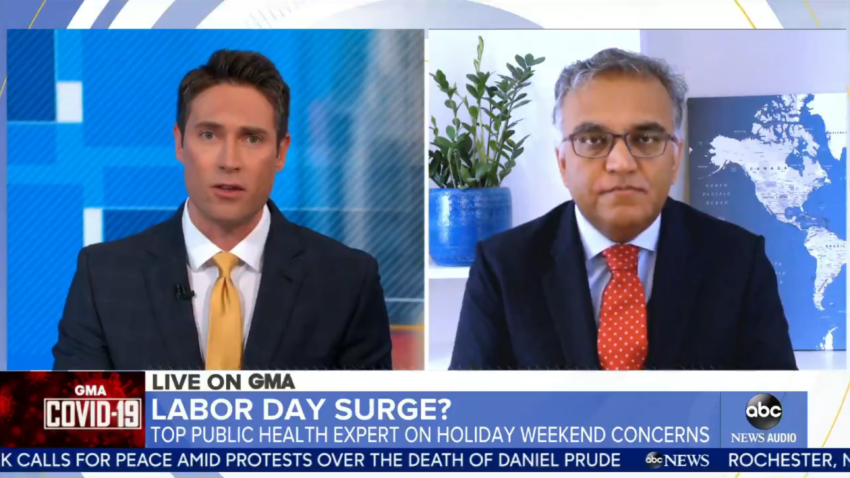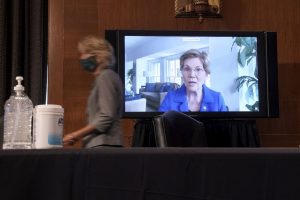Dr. Ashish Jha, the dean of the Brown University School of Public Health, says he’s worried about a new surge of coronavirus cases after the Labor Day weekend. The doctor appeared on Good Morning America Monday.
“Look, we went into Memorial Day with about 20,000 cases per day,” Jha said. “We’re going to Labor Day with about 40,000 cases today, so twice as many. The summer was supposed to be our reprieve, it was supposed to be the time we got a break from the virus. So I am very worried that if we don’t take these precautions seriously, we’re going to go into the fall with school and colleges opening with a lot more cases, and it’s going to be much more difficult to navigate and get through.”
“I am very worried.” @ashishkjha, dean of the Brown University School of Public Health, discusses the safest precautions people can take while celebrating and spending time together. https://t.co/fkv47VDmaz pic.twitter.com/GLB5DyFDyi
— Good Morning America (@GMA) September 7, 2020
(Jha, who has become an oft-cited expert on the coronavirus pandemic, was head of the Harvard Global Health Institute until he left for Brown at the start of the month. Brown announced that the physician would be appointed as dean in February.)
The physician drew on a Twitter thread shared earlier this month detailing his concerns going into the fall. In the thread, he points out while daily reported cases in the United States has steadily decreased since the nasty surge that slammed the south and west this summer, the country is facing a much higher baseline for a likely new spike in cases.
So a walk down memory lane
We opened up Memorial Day with 20,000 daily cases, 5.4% test positivity rate
We peaked around July 22, we had about 75,000 daily cases, nearly 9% positivity rate
As we enter Labor Day, we are at about 40,000 new cases, 6.3% positivity rate
2/5
— Ashish K. Jha (@ashishkjha) September 4, 2020
I know we have been promised more testing this fall — but not here yet
The bigger problem is that we are seeing a real divergence in states
First – southern states
Blazing hot all summer, now cooler
Still generating nearly 20K cases / day
And largely flat to bit down
4/6
— Ashish K. Jha (@ashishkjha) September 4, 2020
Problem is that as kids come back to school, colleges re-open, business re-open – in many places, cases will rise
And we are at a very high baseline to begin with
And as cases begin to rise again, we’ll have larger outbreaks harder to manage.
So what to do?
6/8
— Ashish K. Jha (@ashishkjha) September 4, 2020
We must lower infection burden
We all know what happens in fall
weather cools
people spend more time indoors
flu arrivesHuge challenge to control the virus
Starting at a baseline of 40K daily cases a bit of a disaster
And no, vaccine on October 22 won’t bail us out
Fin
— Ashish K. Jha (@ashishkjha) September 4, 2020
Though things look better now than in July, virus rates lie clear above the surge from this spring. Reported deaths in the summer were still markedly lower than in the spring, however.
Cooler weather also means the start of flu season, which could exacerbate the pandemic. But based on how Australia has handled the flu (remember: June through August are winter months in the Southern Hemisphere), some experts are hopeful that COVID-prevention efforts could neuter the effects of the flu in the U.S. Jha said he was also hopeful for a milder flu season, but still encouraged everyone to get a vaccine.
“That’s a truism every year, but particularly this year,” Jha said.
Get Boston.com’s e-mail alerts:
Sign up and receive coronavirus news and breaking updates, from our newsroom to your inbox.



















